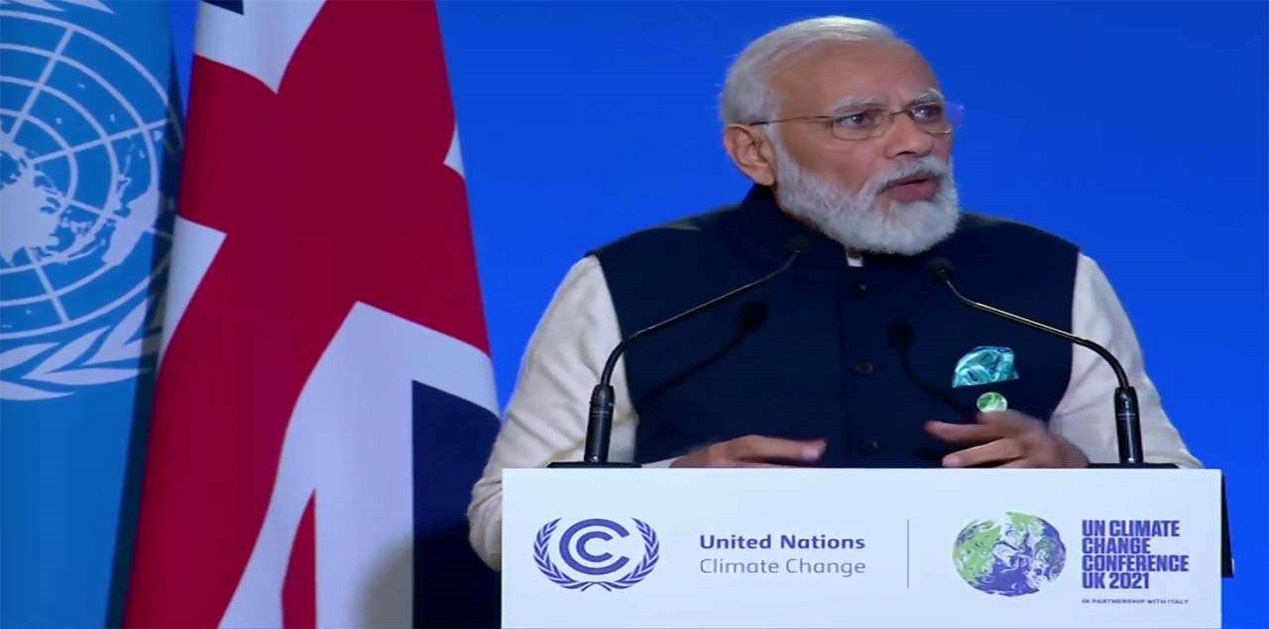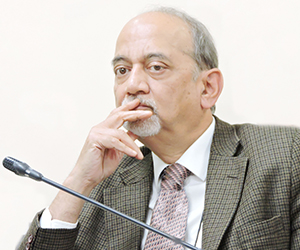Glasgow Conference outcome has been described by different stakeholders as disappointing. But their reasons differ. For climate enthusiasts, the agreement did not go far enough. For developing countries, this meant accepting more stringent emission standards with little prospect of international assistance to cope with either mitigation or adaptation measures they are expected to take. Containing temperature rise to less than 1.5 degrees above the pre-industrial levels has been mainstreamed. At Paris Conference, this was the desired objective to strive for; the agreement was to contain temperature rise within 2 degrees. A lower threshold means a smaller carbon budget to share. Days before the conference ended, a bilateral US-China deal on climate change was announced. The deal may have only legitimized the Chinese position without necessarily moving forward the Conference process. Developed countries' push to ‘phase-out’ coal is based on a one-sided narrative. Coal is not the only fossil source of energy. Fossil fuels remain an important part of energy consumption and electricity generation in Europe, US, and Japan.
PM Modi’s announcement that India will reach the target of Net-Zero Emission by 2070 was welcomed by all sides and gave a push to move towards clean energy. PM also announced 500 GW of installed electricity generation capacity based on non-fossil fuels by 2050. He added that 50% of the capacity will be renewables. PM also said that India will reduce projected emissions between now and 2030 by 1 billion tonnes. India will also reduce the carbon intensity of its economy by less than 45 %. These are ambitious goals and underline India’s commitment to clean energy.
The US and China announced a bilateral agreement on the margins of the Glasgow Summit on 10th November. Announcing a separate deal in the course of multilateral negotiations is not the best practice. If it was meant to impart momentum to the Conference deliberations, it did not seem to bring any noticeable progress. For the most part, it was a reiteration of the already agreed goal of the Paris Conference or domestic action by the two countries. It recalled commitment under Paris Agreement ‘in accordance with Article 2 to hold the global average temperature increase to well below 2 degrees C and to pursue efforts to limit it to 1.5 degrees C.’ [1] It mentioned cooperation on regulatory frameworks and environmental standards to reduce emissions of greenhouse gases in the 2020s, maximizing the societal benefits of the energy transition, policies to encourage decarbonization, green design, and renewable resource utilization, and deployment and application of technologies such as CCUS and Direct Air Capture. These are unexceptional goals. But the agreement did not break any fresh ground on mitigation. China is the largest emitter of GHG followed by the US with the EU being in third place. China emitted 10.17 billion tons of GHG in 2019, US 5.28 billion tons, and EU 3.29 billion tons[2]. India came far behind with 2.63 billion tons.
The last-minute attempt by the UK as the Chair of the Conference to bring in a reference to ‘phasing out’ of coal met with resistance by China, India, Iran, Cuba, and Venezuela. This was toned down to ‘phasing down’ of coal. This phrase was part of the bilateral US-China Declaration, which mentions ‘ China will phase down coal consumption during the 15th Five Year Plan and make best efforts to accelerate this work.’ The second part of the formulation related to phasing out of inefficient fossil fuel subsidies. This was qualified by adding language on ‘providing targeted support to the poorest and the most vulnerable in line with national circumstances.’ This takes care of India’s concerns. As the Indian environment Minister Sri Bhupendra Yadav explained: “Developing countries have still to deal with their development agendas and poverty eradication. Towards this end, subsidies provide much-needed social security and support,”[3] The Minister added “We are giving subsidies for use of LPG to low-income households. This subsidy has been a great help in eliminating biomass burning for cooking, and has improved health of women and in reducing indoor air pollution.”[4]
The attempt to single out coal for phasing out reflects a one-sided narrative. Non-fossil fuels also include gas, which is a major part of the energy basket of developed countries. In the case of the UK, natural gas is 40% of its energy production and 35.5% of electricity generation.[5] In the case of Germany, fossil fuels account for nearly 33% of energy production[6] and 40% of electricity generation[7]. Fossil fuel accounts for 79% of the US’s energy basket[8] and 60% of electricity generation[9] according to the US Energy Information Administration. The coal consumption in the US is set to rise by 20% during 2021 as compared to last year.[10] President Biden has given a call to OPEC to increase oil production. Chancellor Merkel decided to go ahead with Nordstrom 2 to bring more piped gas from Russia. These leaders preferred their country’s energy security and the electorate’s demand for cheap energy; their decisions are difficult to reconcile with the stress on phasing out fossil fuel. Admittedly, energy transition is a complex process and presents difficult choices. However, this constraint applies to policy makers in both developed and developing countries. In the case of the rich world, it is a question of preserving lifestyle choices. For developing countries, the choice is more stark. They have to provide minimum amenities to their population.
Developed countries have not delivered the pledge to provide 100 billion dollars per annum of financial assistance to developing countries. This was part of the commitment undertaken at the Paris Conference when the agreement was to limit the rise in temperature to 2 degrees C. With the adoption of the target of 1.5 degrees C, there will be more stringent emission standards with the consequent need for greater resources. However, even the earlier commitments have not been fulfilled so far. The developed countries have pushed the timeline to 2025.
What is the way forward? India will have to find most of the resources internally for the energy transition. This requires careful choices. Coal is the source of stable, base-load power; this role cannot be fulfilled by renewables which are an intermittent source of energy. The only known technology which can provide both emission-free energy and stable base-load power is nuclear. Nuclear power currently provides less than 2 percent of electricity generation in India. The corresponding figure for the USand EU is 20%.[11] The new Japanese Prime Minister has announced that re-starting nuclear power plants is a must. China plans to increase the share of nuclear from the current level of around 3 percent to 10 % by 2030. [12] Ramping up the share of nuclear power will need government support, especially since this sector is not open to private investment. The government may also consider providing ‘must-run’ status to this sector on par with the renewables, which is essential to provide continuous operation of the nuclear power plants.
Endnotes :
[1]US-China Joint Glasgow Declaration on Enhancing Climate Action in the 2020s, https://www.state.gov/u-s-china-joint-glasgow-declaration-on-enhancing-climate-action-in-the-2020s/
[2]Hannah Ritchie and Max Roser.(2020)- CO₂ and Greenhouse Gas Emissions https://ourworldindata.org/ co2-and-other-greenhouse-gas-emissions
[3]Indian Express, Countries adopt Glasgow climate pact after India, China force amendment on Coal reference, November 15, 2021, https://indianexpress.com/article/world/climate-change/glasgow-climate-pact-coal-subsidy-cop26-conference-7621670/
[4]Indian Express, Countries adopt Glasgow climate pact after India, China force amendment on Coal reference, November 15, 2021, https://indianexpress.com/article/world/climate-change/glasgow-climate-pact-coal-subsidy-cop26-conference-7621670/
[5]Department for Business, Energy and Industrial Strategy, Govt. of UK. (2021). Digest for UK Energy Statistics, Annual Data for UK, 2020.
https://assets.publishing.service.gov.uk/government/uploads/system/uploads/attachment_data/file/1007132/DUKES_2021_Chapters_1_to_7.pdf
[6]Data extrapolated from: EIA, 2019. Germany Country Profile https://www.eia.gov/international/overview/country/DEU
[7]De Statis, StatischeBandesamt. (2021). Gross Electricity Production in Germany.
https://www.destatis.de/EN/Themes/Economic-Sectors-Enterprises/Energy/Production/Tables/gross-electricity-production.html
[8]US EIA. (2021). US Energy Facts Explained https://www.eia.gov/energyexplained/us-energy-facts/data-and-statistics.php
[9]US Energy Information Administration. (2021). Electricity in the United States.
https://www.eia.gov/energyexplained/electricity/electricity-in-the-us.php
[10]Oil Price, Biden’s Baffling Oil Policy Faces Pushback from All Sides, 15.11.2021, https://oilprice.com/Energy/Crude-Oil/Bidens-Baffling-Oil-Policy-Faces-Backlash-From-All-Sides.html
[11]VIF Task Force Report, Nuclear Power: Imperative for India’s Development, Page 16
[12]VIF Task Force Report, Nuclear Power: Imperative for India’s Development, Page 16
(The paper is the author’s individual scholastic articulation. The author certifies that the article/paper is original in content, unpublished and it has not been submitted for publication/web upload elsewhere, and that the facts and figures quoted are duly referenced, as needed, and are believed to be correct). (The paper does not necessarily represent the organisational stance... More >>
Image Source: https://cdn.dnaindia.com/sites/default/files/styles/full/public/2021/11/02/1003541-pm-modi-glasgow-summit-speech-ani.jpg











Post new comment